
Bolton Abbey Estate in Wharfedale, North Yorkshire, England, takes its name from a 12th-century Augustinian monastery of canons regular, now known as Bolton Priory. The priory, which was closed in the 1539 Dissolution of the Monasteries ordered by King Henry VIII, is in the Yorkshire Dales, which lies next to the village of Bolton Abbey.

Allerton Castle, also known as Allerton Park, is a Grade I listed nineteenth-century Gothic or Victorian Gothic house at Allerton Mauleverer in North Yorkshire, England. It was rebuilt by architect George Martin, of Baker Street, London in 1843–53.

Elsham Hall is a 17th-century English country house situated in its own parkland in Elsham, North Lincolnshire. The park and gardens are open to the public.
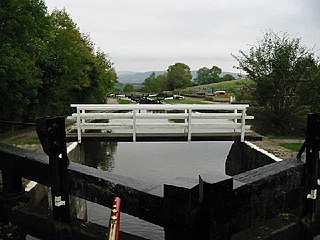
Bank Newton is a small settlement and civil parish in the Craven district of North Yorkshire, England. According to the 2001 census the parish had a population of 47, and at the 2011 census the population of the civil parish remained less than 100 and therefore its details were included in the civil parish of Gargrave. In 2015, North Yorkshire County Council estimated the population of the parish to be 50.

Great Coxwell Barn is a Medieval tithe barn at Great Coxwell, Oxfordshire, England. It is on the northern edge of the village of Great Coxwell, which is about 9 miles (14 km) northeast of Swindon in neighbouring Wiltshire.

Cerne Abbey was a Benedictine monastery founded in 987 in the town now called Cerne Abbas, Dorset, by Æthelmær the Stout.
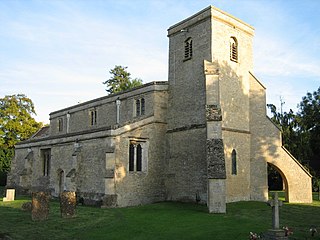
Launton is a village and civil parish on the eastern outskirts of Bicester, Oxfordshire, England. The 2011 Census recorded the parish's population as 1,204.
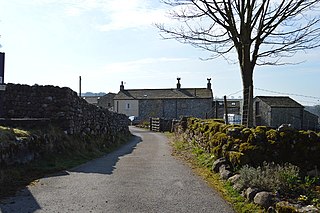
Friar Garth Farmhouse is a Grade II listed building in Malham, North Yorkshire, England. It was listed as an historic site by English Heritage on 13 September 1988.

The Tithe Barn at Manor Farm in Doulting, Somerset, England, was built in the 15th century, and has been designated as a Grade I listed building, and scheduled as an ancient monument.

Rivington Hall Barn adjoins Rivington Hall in Rivington, Lancashire, near Chorley and Bolton. The Tithe barn foundation stones support a Medieval cruck construction and possibly date to the between the 9th and 15th centuries. The structure was restored, altered and enlarged in 1905 by Jonathan Simpson for Lord Leverhulme. It is a Grade II Listed building.

Hallfield House is a Grade II listed building situated in Bradfield Dale, 1.7 miles (2.74 km) west of the village of Low Bradfield, near Sheffield in England.
Chelford Manor House stands to the southeast of the village of Chelford, Cheshire, England. It dates from the early 17th century. An extension was made to it in 1671, and more alterations and additions were carried out in the 19th and 20th centuries. The last addition was made for Colonel Dixon of Astle Hall. The house is timber-framed on a stone plinth. The infill is either brick or rendered brick. It is roofed in slate and cement tiles. It is a "complex" building, with parts in two storeys, and other parts in three storeys. The house is recorded in the National Heritage List for England as a designated Grade II* listed building. To the north of the manor house is a former tithe barn. This is also timber-framed with brick infill, and is listed at Grade II.

Ashleworth Court is a grade I listed house close to the River Severn in Ashleworth, Gloucestershire, England.
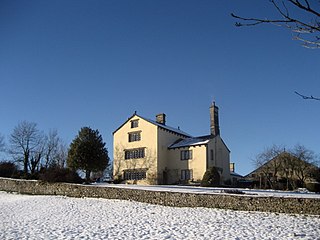
Bank Newton Hall is a historic building in Bank Newton, a village in North Yorkshire, in England.
Barden Old Chapel, also known as Barden Tower Chapel or Barden Church, is a historic building in Barden near Skipton in North Yorkshire, in England.
Bolton Abbey is a civil parish in the Craven district of North Yorkshire, England. It contains 21 listed buildings that are recorded in the National Heritage List for England. Of these, two are listed at Grade I, the highest of the three grades, three are at Grade II*, the middle grade, and the others are at Grade II, the lowest grade. The parish contains the villages of Bolton Abbey and Bolton Bridge and the surrounding area. The most important building in the parish is Bolton Priory, part of which is in ruins, and the other part is the nave of the priory church, which has been converted into a parish church; both are listed at Grade I. Many of the other listed buildings are associated with the priory, including its former gatehouse, which has been converted into a house. The remainder of the listed buildings include houses and cottages, a farmhouse, barns, a former mill and an associated aqueduct, a bridge, a milestone and a memorial fountain.
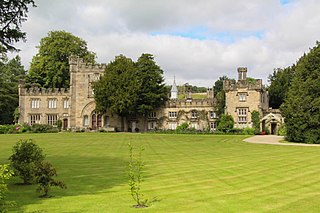
Bolton Abbey Hall is a historic building in Bolton Abbey, a village in North Yorkshire, in England.
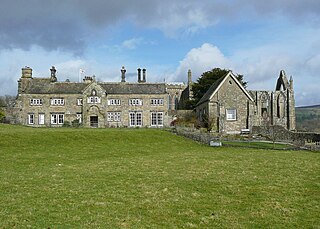
The Old Rectory is a historic building in Bolton Abbey, a village in North Yorkshire, England.
Bolton Old Hall is a historic building in Bolton-on-Swale, a village in North Yorkshire, in England.
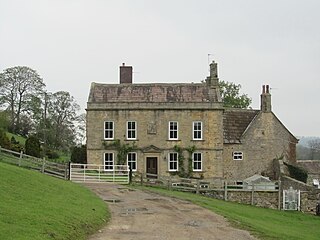
Nutwith Cote is a historic building in Burton-on-Yore, a village in North Yorkshire, in England.
















